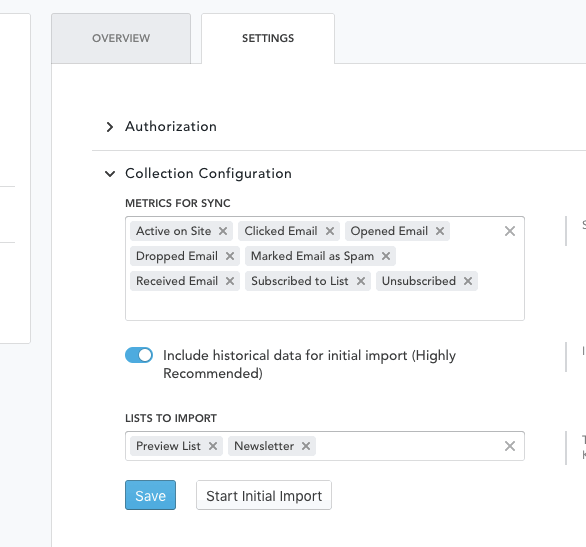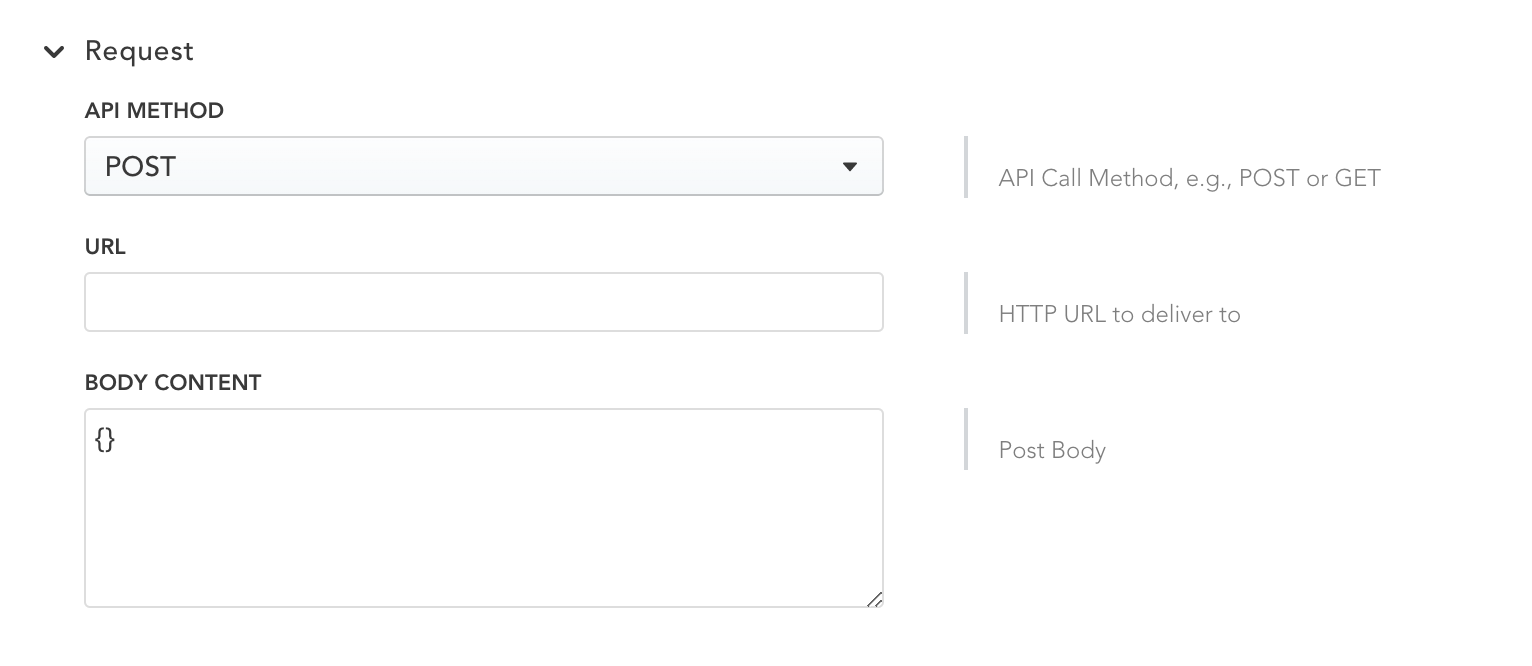forms/
The forms/ folder in Connect Platform for Optimizely Data Platform (ODP) applications contains settings and content files where you define how settings forms display and function for users.
settings.yml
settings.ymlThe settings.yml file defines the structure of the form that an end-user sees when configuring your app.


Best practices
Items to include in your settings:
- Collection of authentication information
- Configuration of logic (for example, which data to import)
- Starting a historical bulk import
For more information, see Form Basics.
content-settings.yml
content-settings.ymlNote
Required for Channel apps only.
The content-settings.yml file defines the settings form of an app's channel interface. It exists at the touchpoint level (for example, shared between messages involved in content testing). Typical content for this form includes sender (from/reply addresses), target platform selection, and so on. If none of this is required, the form may simply contain no sections.
This form may contain as many sections as desired, but all configured content is considered to be static (there is no support for personalization using Optimizely Data Platform (ODP) liquid anywhere in this form). If an app uses dynamic targeting (see App SDK documentation), this form must contain all necessary information to determine the targeting details.
Below is an example of the content-settings.yml file from the API Channel App:
sections:
- key: target
label: Targeting
elements:
- key: identifier
label: Target Identifier
type: select
help: Select an ODP Identifier for targeting
required: true
dataSource:
type: app
function: list_identifiers
- key: headers
label: Headers
elements:
- key: h1_key
label: Header Name 1
help: Header name (for example, Content-Type)
type: text
hint: Content-Type
defaultValue: Content-Type
- key: h1_value
label: Header Value 1
help: Header value (for example, application/json)
type: text
hint: application/json
defaultValue: application/json
- key: h2_key
label: Header Name 2
help: Header name (for example, Content-Type)
type: text
hint: Content-Type
- key: h2_value
label: Header Value 2
help: Header value (for example, application/json)
type: text
hint: Content-type

The above example yml as displayed in the ODP App Campaign Creator.
For more information, see Form Basics.
content-template.yml
content-template.ymlNote
Required for Channel apps only.
The content-template.yml file defines the template form of an app's channel interface. It exists at the individual message level. Typical content for this form includes subject line, message body, and so on.
This form must contain at least one section and all string data (whether from a free-text input, select box, or other) is eligible for personalization via ODP liquid. The value of each string field is translated into a simple substitution format, where personalized blocks are denoted by text of the form %%variable%%. The variable names are generated by the translation process and the complete set of variable names is provided to the app for reference along with the translated content during the publish phase. Personalized substitutions are provided during the deliver calls to be inserted in place of the substitution variables.
Below is an example of the content-template.yml file from the API Channel App:
sections:
- key: request
label: Request
elements:
- key: method
label: API Method
help: API Call Method (for example, POST or GET)
type: select
options:
- value: GET
text: GET
- value: POST
text: POST
- value: PUT
text: PUT
- value: PATCH
text: PATCH
- value: DELETE
text: DELETE
hint: Content-Type
defaultValue: Content-Type
- key: url
type: text
label: URL
help: HTTP URL to deliver to
required: true
validations:
- regex: "^https?:\\/\\/"
message: Must be an http or https url
- key: body
type: text
label: Body Content
help: Post Body
multiline: true
defaultValue: "{}"
visible:
operation: any
comparators:
- key: method
equals: 'POST'
- key: method
equals: 'PUT'
- key: method
equals: 'PATCH'

As displayed by the ODP App Campaign Creator.
For more information, see Form Basics.
Updated about 1 month ago